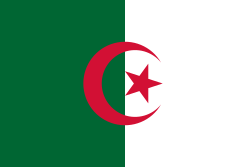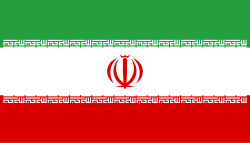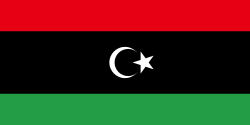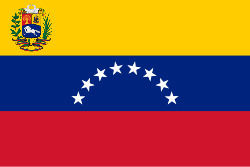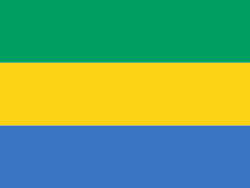OPEC


Organization of the Petroleum Exporting Countries forkortet OPEC er en organisation bestående af 13 lande (pr. januar 2020),[1] der har det til fælles, at deres økonomi påvirkes væsentligt af olieeksport. OPEC's hovedformål er at sørge for stabile og rimelige oliepriser. OPEC-landene råder ifølge de officielle tal over ca. 75% af verdens beviste oliereserver og står for 40% af olieudbuddet.
Historie
OPEC blev stiftet i 1960 på en konference i Bagdad af Iran, Irak, Kuwait, Saudi Arabien og Venezuela. Formålet med at stifte organisation var at skabe en organisation der kunne sørge for at landene fik noget ud af deres store olieressourcer. Og for at de 5 lande, der på det tidspunkt var forholdsvist fattige u-lande kunne stå imod de store oliefirmaer.
Olieembargoen i 1973

Den stadigt uløste arabisk-israelske konflikt førte til sidst til det svar, som transformerede OPEC til en formidabel politisk kraft. Efter Seksdageskrigen i 1967 dannede de arabiske medlemmer af OPEC, en egen gruppe,Organization of Arab Petroleum Exporting Countries (OAPEC), for at give politikken center-status og udøve pres mod Vesten på grund af dets støtte til Israel. Ægypten og Syrien sluttede sig til sidstnævnte gruppering for at hjælpe med at artikulere dens mål, skønt de ikke selv var større olieproducenter. Senere, med Yom Kippur krigen, galvaniseredes den arabiske opinion. Oprørte over den nød-genforsyning som blev sat i værk og som havde hjulpet Israel med at modstå de ægyptiske og syriske styrker, indførte den arabiske verden en olieembargo mod USA og Vesteuropa, som resulterede i Oliekrisen i 1973.
Tiden efter 1973
Det er dog ikke lykkedes for OPEC og der har været store udsving i olieprisen. I de følgende år fortsatte olieprisen med at svinge meget med en stor stigning i 1979 og et stort fald i 1986. Organisation begyndte dog at se at det vil være fordelagtigt at holde en nogenlunde konstant oliepris. I 1990'erne lykkedes dette og prisen på olie lå genlunde stabilt omkring $10-$30, men efter år 2001 har der været store udsving i olieprisen og prisen steg til niveauet omkring $100-$120 i 2008 med et efterfølgende fald ned til niveauet omkring $50-$80 i 2008-2011 efterfuldt af nye prisstigninger i 2011-2014 til niveauet omkring $100-$120 for efter 2014 at falde tilbage til niveauet omkring $50. De $100 svarede i reale priser til prisen under oliekrisen i 1973.
Oliereserver
Hvor store OPEC's samlede oliereserver reelt er, er vanskeligt at besvare. Tallet for "beviselige oliereserver", der er den almene standard for måling af oliereserver, blev i 1980'erne afgørende for, hvor meget olie, hvert enkelt OPEC-land måtte sælge. OPEC-landene opjusterede derfor disse tal kraftigt (mellem 47 og 197%). Derudover nedjusteres tallene ikke, på trods af, at man dagligt pumper store mængder olie op. (Se ASPO's oversigt over olieopskrivninger i OPEC-landene). Om OPEC har så store olieressourcer, som de påstår, kan derfor betragtes som værende tvivlsomt.
Medlemsstater
| Land | Region | Længden af medlemskab[2][3] | Befolkning (2022)[4][5] | Areal (km2)[6][7] | Olie produktion (bbl/dagl. 2023) [A][8] | Fundne reserver (bbl, 2022)[A][9][7] |
|---|---|---|---|---|---|---|
| Nordafrika | Siden 1969 | 44.903.220 | 2.381.740 | 1.183.096 | 12.200.000.000 | |
| Centralafrika | Siden 2018[10] | 5.970.000 | 342.000 | 261.986 | 1.810.000.000 | |
| Centralafrika | Siden 2017 | 1.674.910 | 28.050 | 88.126 | 1.100.000.000 | |
| Centralafrika |
| 2.388.990 | 267.667 | 204.273 | 2.000.000.000 | |
| Mellemøsten | Siden 1960[B] | 88.550.570 | 1.648.000 | 3.623.455 | 208.600.000.000 | |
| Mellemøsten | Siden 1960[B] | 44,496,120 | 437,072 | 4,341,410 | 145,020,000,000 | |
| Mellemøsten | Siden 1960[B] | 4,268,870 | 17,820 | 2,709,958 | 101,500,000,000 | |
| Nordafrika | Siden 1962 | 6,812,340 | 1,759,540 | 1,225,430 | 48,360,000,000 | |
| Vestafrika | Siden 1971 | 218,541,210 | 923,768 | 1,441,674 | 36,970,000,000 | |
| Mellemøsten | Siden 1960[B] | 36,408,820 | 2,149,690 | 9,733,479 | 267,190,000,000 | |
| Mellemøsten | Siden 1967[C] | 9,441,130 | 83,600 | 3,393,506 | 113,000,000,000 | |
| Sydamerika | Siden 1960[B] | 28.301.700 | 916.445 | 750.506 | 303.220.000.000 | |
| OPEC total | 491.757.880 | 10.955.392 | 28.956.906 | 1.240.970.000.000 | ||
| Verdens total | 7.951.150.000 | 510.072.000 | 81.803.545 | 1.564.441.000.000 | ||
| OPEC percent | 6,18% | 2,14% | 35,39% | 79% | ||
- ^ a b One petroleum barrel (bbl) is approximately 42 U.S. gallons, or 159 liters, or 0.159 m3, varying slightly with temperature. To put the production numbers in context, a supertanker typically holds 2,000,000 barrels (320,000 m3),[11] and the world's current production rate would take approximately 56 years to exhaust the world's current proven reserves.
- ^ a b c d e Fodnotefejl: Ugyldigt
<ref>-tag; ingen tekst er angivet for referencer med navnetMedstifter - ^ The UAE was founded in December 1971. Its OPEC membership originated with the Emirate of Abu Dhabi.
<ref>-tag med navn "Founder" defineret inden i <references> anvendes ikke i den ovenstående tekst.I parentes måned og år for optagelse
- De Forenede Arabiske Emirater (november 1967)
- Kuwait (september 1960)
- Irak (september 1960)
- Iran (september 1960)
- Saudi-Arabien (september 1960)
- Indonesien (2016)
- Venezuela (september 1960)
Se også
- OAPEC, en udbrydergruppe dannet i 1968, bestående af arabiske medlemmer af OPEC.
Referencer
- ^ "Member Countries". OPEC. Hentet 26. august 2020.
- ^ Fodnotefejl: Ugyldigt
<ref>-tag; ingen tekst er angivet for referencer med navnetOPEC Medlem - ^ Fodnotefejl: Ugyldigt
<ref>-tag; ingen tekst er angivet for referencer med navnetMay2017Vienna - ^ "World Bank Open Data". World Bank Open Data. Hentet 2024-04-17.
- ^ "Population 2022" (PDF).
- ^ "Field Listing: Area". The World Factbook. Central Intelligence Agency. Arkiveret fra originalen 31. januar 2014. Hentet 4. januar 2009.
- ^ a b Organization of the Petroleum Exporting Countries. (2023). OPEC Annual Statistical Bulletin (58th ed.). Retrieved April 17, 2024, from https://www.opec.org
- ^ "International - U.S. Energy Information Administration (EIA)". www.eia.gov. Hentet 2024-04-17.
- ^ OPEC, Organization of the Petroleum Exporting Countries. "OPEC Share of World Crude Oil Reserves". www.opec.org. Hentet 16. april 2024.
- ^ "Congo Republic becomes OPEC oil cartel's newest member". U.K. (editorial). Reuters. Arkiveret fra originalen 22. juni 2018. Hentet 22. juni 2018.
- ^ Hayler, William B.; Keever, John M. (2003). American Merchant Seaman's Manual. Cornell Maritime Press. s. 14.3. ISBN 978-0-87033-549-5.
 | Wikimedia Commons har medier relateret til: |
Medier brugt på denne side
Flag of Iran. The tricolor flag was introduced in 1906, but after the Islamic Revolution of 1979 the Arabic words 'Allahu akbar' ('God is great'), written in the Kufic script of the Qur'an and repeated 22 times, were added to the red and green strips where they border the white central strip and in the middle is the emblem of Iran (which is a stylized Persian alphabet of the Arabic word Allah ("God")).
The official ISIRI standard (translation at FotW) gives two slightly different methods of construction for the flag: a compass-and-straightedge construction used for File:Flag of Iran (official).svg, and a "simplified" construction sheet with rational numbers used for this file.
The national flag of the Democratic Republic of the Congo. Created according to the 2006 constitution : Son emblème est le drapeau bleu ciel, orné d’une étoile jaune dans le coin supérieur gauche et traversé en biais d’une bande rouge finement encadrée de jaune. (Its symbol is a sky blue flag, decorated with a yellow star in the upper left corner and crossed in the diagonal by a red strip with thin yellow borders) It seems to be identical, except for a lighter field hue, to the 1966–1971 flag.
Chart from data taken from http://en.wikipedia.org/wiki/List_of_Oil_Trading_Nations
Note: There has been a mistake in the Norwegian data taken into this diagram, as it shows Norway exporting more oil than it produced. China is conspicuously missing, and all the information is badly outdated (2006). Update needed!Forfatter/Opretter: TomTheHand, Licens: CC BY-SA 3.0
I saw Image:Oil Prices 1861 2006.jpg recently and found it to be very useful. I noticed that it was in JPEG format, and saw that it was based on government sources which are available online, so I decided to recreate it in a lossless image format and update it to 2007. I've been experimenting with SVG lately, so I decided to try that instead of just saving a chart as a PNG. I found that I had to do a good bit of reverse engineering of data, and so I would like to document that here so that this graph can be more easily maintained in the future.
I found that the source quoted by the previous image, this spreadsheet from the Energy Information Administration (EIA), only provides data up to 1999 and uses 1999 dollars. It appears to provide conversions to real 1999 dollars using the United States Consumer Price Index (CPI), available from the Bureau of Labor Statistics here.
I studied the EIA web site further and noted that the author of the previous image brought the above spreadsheet up to date using the latest Brent Spot prices, available on this spreadsheet, also from the EIA. The update to 2006 dollars also appears to use the CPI.
I used the newest version of the above Brent Spot spreadsheet to get prices up to 2007, and converted to 2007 dollars using the latest CPI data.
I have thought about how to incorporate 2008 data, but haven't decided how to do it yet. The chart currently uses yearly averages; since 2008's not over yet, we don't have an average price for this year. I have to integrate it in a way that doesn't hurt the accuracy of the graph.
I have put further thought into how the EIA's 1861–1999 spreadsheet is constructed, with the intention of possibly improving it. I am not a commodities broker, nor am I an oil man, but I have a few thoughts:
- Data from 1861–1944 is available on this page of annual average US domestic crude oil first purchase prices from 1859–2007. The chart leaves off 1859–1860 data. I am not sure why, but I imagine it's because it's disproportionately expensive: $16.00 in 1859 and $9.59 1860, both in the currency of the day, ridiculously expensive in today's money. 1859 was the year oil drilling began in the United States, in Titusville, Pennsylvania, and so I imagine it took a couple of years for prices to get down to realistic levels. Prices from the first couple of years of production are probably meaningless.
- Data from 1945–1985 is said to be the price for "Arabian Light posted at Ras Tanura". I don't see anywhere else on the EIA web site where that data is found.
- Data from 1986 and up is said to be the yearly average Brent Spot. Brent Spot prices are found elsewhere on the EIA web site, but the earliest price (from this spreadsheet) is from May 20, 1987. I am not sure why they don't have prices going back to 1986.
- I think the spreadsheet converts to 1999 dollars using the United States Consumer Price Index for 1913 and up. When I convert to 1999 dollars using the CPI myself, I get numbers extremely close to the spreadsheet. It's close enough that I think either some decimal places got dropped somewhere or some earlier CPIs might have been reevaluated in the years since 1999.
However, the CPI is not available from the BLS for years before 1912. I'm not sure where the spreadsheet got its 1861–1912 conversions. In 1975 the United States Census Bureau published Historical Statistics of the United States, Colonial Times to 1970, available here. It includes their best guesses at CPIs starting in 1800, but when I tried to use them my numbers were way off. Yes, I took into account that the book sets CPI=100 at 1967. They must have gotten their data from someplace else. Another possibility is the Historical Statistics of the United States Millenial Edition, here. Being a good 30 years newer, it may have drastically different data based on more accurate research. I would have to pay for access, though.
I am not a big fan of how the graph is a composite of three different sources. It sort of seems like an apples and oranges comparison to me. The 1861–1944 data is domestic crude oil first purchase price. The EIA defines "first purchase" this way:
- An equity (not custody) transaction involving an arms-length transfer of ownership of crude oil associated with the physical removal of the crude oil from a property (lease) for the first time. A first purchase normally occurs at the time and place of ownership transfer where the crude oil volume sold is measured and recorded on a run ticket or other similar physical evidence of purchase. The reported cost is the actual amount paid by the purchaser, allowing for any adjustments (deductions or premiums) passed on to the producer or royalty owner.
The data from 1945–1985 is, as far as I understand, the price you would have paid for a barrel of light crude if you had dropped anchor at Ras Tanura and said "Load it up!". The price from 1986–present is the price you would have paid if you had gone into the International Petroleum Exchange in London flapping your arms around and shouting (or, starting in 2005, put a message to IntercontinentalExchange into a series of tubes).
These all seems subtly different to me. I think it would be better if the entire chart relied on the same source. Oil was not extracted in large quantities in the Middle East until the mid-20th century, and was first drilled in the North Sea in the 1970s, but the EIA has US domestic oil prices from 1859 all the way to today. It has month-by-month prices from 1974. Because the prices are for oil right at the field, they are lower than the market prices we're used to hearing, but they are still real prices and are from a consistent source. I am considering making a version of this graph that uses US domestic first purchase prices exclusively, and uses monthly data from 1974 onward so that we can go all the way to last month instead of waiting for the yearly average.
I made a graph that shows monthly Brent spot prices, which is available here. It provides a detailed, recent history. I plan to make some more graphs in the future.